Tapirs, Endangered or Hardy Survivors?
By Carla Estell Feb 2023
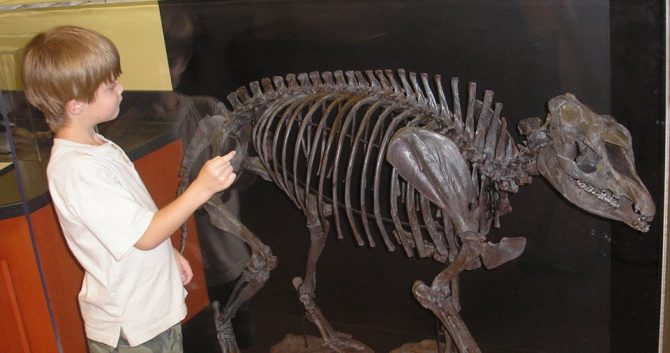
World Tapir Day is coming soon. Since 2008 World Tapir Day has been celebrated annually on April 27th. Although the tapir is its own animal kind, it is similar to a wild pig. In contrast to today’s rather small distribution, tapir fossils are found all over the world.
The tapir is used to help spread awareness of climate change, loss of habitat, and the many other ways humans are harming this earth and its animal inhabitants. And I totally agree. Humans caused climate change, loss of habitat and the total destruction of earth’s animal inhabitants, but not in the way that it is being touted today.
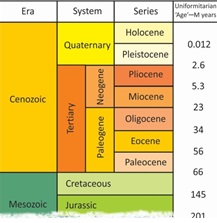
First we will look at today’s typical perspective. The top portion of the geological column is a necessary reference tool for names and dates. Jurassic is the familiar age of the dinosaur. Tapirs magically appeared about 30 million years later during the Eocene and then defied evolution by remaining unchanged for the next 35 million years. They somehow survived and thrived through many vast extinction events only to suddenly disappear from most of the world, presumably due to climate change and more recently – man.
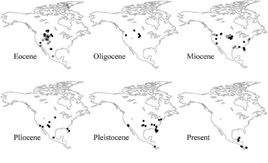
Today the secular scientists are quick to point to climate change and man as being the cause of mammal endangerment. They point to the prolific amount of tapir fossil on nearly every continent and say tapirs are a prime example of an endangered mammal. The fossils prove they used to live all over the world.
Now due to climate change and man their population has shrunk to four isolated locations:
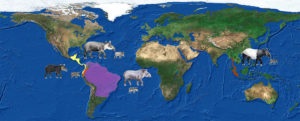
Tropical South America,
Southern Mexico and Central America,
the Andes mountain range of South America,
the Thailand peninsula to the island of Sumatra.
Rather than paraphrase, I will let them speak for themselves. As you read through these excerpts, pay attention to the many admittedly unanswered questions.
On World Tapir Day, a Quick Look at (Part of) Tapir History By Darren Naish April 27, 2016
“Tapirus is known from the Miocene onward and more than 15 extinct species are currently recognized. Because these species appear more or less simultaneously in North America, Europe and Asia, the origins of Tapirus are somewhat murky.
Tapirs in France, in Italy, in Hungary, in the Balkans! Tapir history in the Miocene of Europe is quite complex. The group repeatedly disappears and reappears, apparently as a consequence of local extinction followed by reinvasion from elsewhere. Indeed, there is a so-called ‘tapir vacuum’ just after the Lower Miocene that is soon filled (Van der Made & Stefanovic 2006). European tapirs then persisted across the Miocene-Pliocene boundary, T. arvernensis being abundant at several French and Italian sites of Pliocene age. Climatic deterioration at the end of the Pliocene seems to have been responsible for the decline and eventual disappearance of tapirs from Europe. A group of mammals that are not regarded as even slightly ‘European’ today were in fact a long-term, diverse component of European faunas for millions of years.
Several especially big tapirs are known from the Upper Miocene, Pliocene and Pleistocene of eastern Asia. The biggest of these were similar in size to mid-sized rhinos
Tapirs are present in North America at various Miocene localities but are far better known from Pliocene and Pleistocene sediments. Indeed, tapirs were still present in the USA until close to the end of the Pleistocene, the California tapir T. californicus being known from the La Brea Tar Pits in Los Angeles.
South American tapirs were long assumed to have invaded the continent following the closure of the Panamanian Isthmus during the Late Pliocene. The presence of Upper Miocene tapirs in the Amazon Basin shows, however, that the group reached the continent somewhat earlier…”
Mysteries abound in tapir “history”
How did the tapirs come into South America if the Panamanian Isthmus bridge had not yet formed? Gray’s Fossil Site in Gray, Tennessee has become another famous location of tapir fossils, these are believed to be from the Miocene. Tapirs along with alligators, rhinos, saber tooth cats and mastodons have been found in the clay pits. Even the remains of a red panda have recently been discovered.
The Rancho La Brea Tar Pits of Los Angeles, California contains another huge collection of fossils. Many groups are still alive today, such as coyotes, mountain lions, woodrats, bats, shrews, rabbits, black bears, and raccoons. Others, they say, went extinct during the Late Pleistocene including: giant ground sloths, saber-toothed cats, mastodons, mammoths, tapirs, camels, and horses.
My question is if sloths, mastodons, mammoths, tapirs, camels and horses once roamed across North America, how did they all go extinct? Perhaps there is another interpretation for the mass destruction so evident in the fossil record. I believe humans have caused climate change, loss of habitat and the total destruction of earth’s animal inhabitants, not over millions of years, but by man’s rebellion against his Creator. God wiped man off the face of the earth with a Global Flood. The Flood destroyed the earth, changed earth’s climate, and buried or froze the remains of the drowned animals.
When viewed from this Biblical perspective, a totally different picture emerges. Millions of tapirs, like all other land mammals, died during the Flood and were fossilized. Their remains are found in mixed mounds with so many other mammals, because during the Flood their bodies bloated and floated then currents and wind collected them into islands of carcasses. Later they were beached on the rising continents and buried by mudflows and volcanic ash. Perhaps the tar and oil at the La Brea Tar Pits is actually from their decomposed bodies.
Considering how, according to the Bible, there were only two survivors on the ark, today’s tapir populations grew from those two survivors. They must have been usefully to man for leather and meat, so were kept in herds during the post flood period. Then as man migrated from the Tower of Babel, they were transported to different locations. Rather than man causing their endangerment, they actually kept them from extinction and transported them around the globe.
So, the present day distribution of mammals can either be used as evidence of endangerment by climate change and man or as post flood re-population after the mass destruction of life during the Global Flood.
It would be my desire to end the article there, but sadly the explanation is not that simple for today’s creationists. Many creationists think that the tapir fossils found all over the world are post flood.
As this excerpt from the Tapir article Creation 41(3):28–31, July 2019 shows, “… the creationist view that post-Flood tapirs multiplied and spread out from the Ark’s landing site “on the mountains of Ararat” (Genesis 8:4), with further outward migration and local extinction leaving today’s tapir ‘remnant’ populations in Central/South America and Southeast Asia.” But for this to be true, then the tapirs had to spread out across the globe, crossing an untold number of mountain ranges only to mostly all die off. Personally, I think it is more logical and Biblical to believe:
Fossils came from Noah’s Flood
A sign of God’s judgement sealed in mud
Written upon earth’s pages of stone
Not in ink, but written in bone
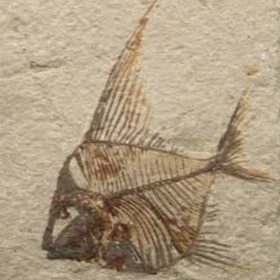
Find out more …
- About The Estells
- Another possible solution for disharmonious associations in Ice Age deposits
- Articles
- Connecting the Dots
- Contact information
- Creation based VBS
- Creation Resources
- Crinoid Fossils: Evidence of Millions of Years or the Global Flood?
- Did Winter Cleanse the Flood Water of Excess Salt?
- Do Antarctic Fossil Forests Prove Trees Grew near the South Pole?
- Educational Resources
- Fish Fossil
- Fish Fossils
- Geodes: Crystals Hidden Within a Round Rock
- Geology Explained in Terms of Global Flood Recovery
- God’s Forgotten Promise
- Living Fossils
- Making logical sense of earth’s geological column.
- Mount Saint Helens
- Mount Saint Helens
- Petrified Wood
- Petrified Wood
- Post Flood Migration of Mammals
- Printed Letters to the Editor
- Resources
- Reverse Engineering the Grand Canyon
- Seeing God’s Ingenuity in Earth’s Design
- Seminar descriptions with Fliers and Bios
- Seminar Topics
- sliderImages
- Songs and Poems
- Tapirs, Endangered or Hardy Survivors?
- The Demise of the Mammoths
- The Flood
- The launching of our creation ministry
- The Overlooked Flood Stage
- The Rewriting of Paradise
- The Rocks Speak Out
- The Stones’ Story Retold
- The Stones’ True Story
- The Way of Salvation
- Videos
- Was there an Ice Age?
- Whale Falls: Present Key to the Abundance of Sea Invertebrate Fossils

